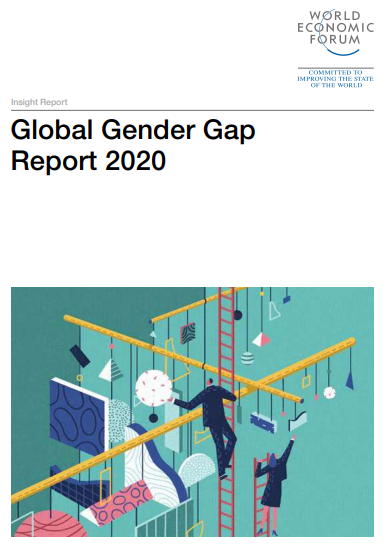Global Gender Gap Report 2020 – World Economic Forum
The World Economic Forum’s Global Gender Gap Report 2020 analyzes data from 153 countries in order to effectively compare the gender gap across the world and in different regions. These rankings and information was then used to design effective methods to reduce the gap between genders globally.
Some main findings from this report include:
- The Global Gender Gap score is 68.6% in 2020. The 4 elements used to measure this index include Economic Participation and Opportunity, Educational Attainment, Health and Survival and Political Empowerment.
- Iceland, Norway and Finland have the highest gender gap scores (over 80%) while lowest scores can be seen in Pakistan, Iraq and Yemen.
- When looking into the sub-indexes, Health and Survival and Educational Attainment have the highest gender gap score of over 90%. However, Economic Participation and Opportunity only scores 58% and Political Empowerment has the lowest score of 25%.
- Benin, Iceland and Lao PDR have the highest scores in Economic Participation and Opportunity. Lowest scores for this subindex are from Yemen, Syria and Iraq.
- The educational Attainment gender gap is the best in Australia, Austria and Bahamas when Guinea, Congo and Chad recorded the lowest scores.
- Angola, Argentina and Bahamas have the highest Health and Survival Gender Gap scores, while Vietnam, Azerbaijian and China has the lowest scores.
- Evidently, Iceland, Norway and Nicaragua have successfully reduced the gender gap in politics with the highest scores in Political Empowerment. On the other hand, a huge gap can still be seen in Yemen, Papua New Guinea and Vanuatu.
- Based on regions, Middle East and North Africa have the largest gender gap as opposed to Western Europe and North America with the smallest gender gap. North America scores the highest in Economic Participation and Opportunity, Educational Attainment and Health and Survival while Western Europe scores the best in Political Empowerment.
- On the other hand, South Asia scores lowest in Economic Participation and Opportunity, Sub-Saharan Africa scores lowest in Educational Attainment; East Asia and the Pacific scores the lowest in Health and Survival; the Middle East and North Africa score the lowest in Political Empowerment.
- Overall, female workers share 49% of workforce across all professional and technical role. However, only in People and Culture and Content Production roles that women have more employment opportunity in. Cloud Computing, Engineering and Data and AI are roles that are less likely to have female professionals.
- When studying the share of male and female in different skills groups, it’s evident that in general men are more skilful than women in most skills, especially in technology and business.
Full report here.
